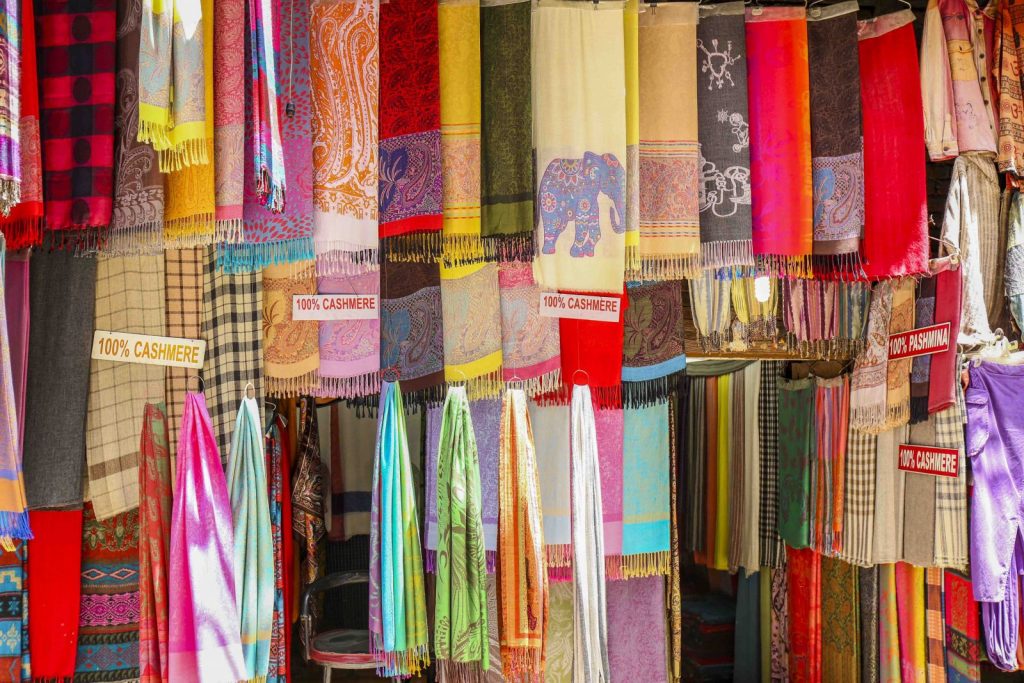Pashmina or Cashmere is known as the softest, and highly delicate fabric supplied by the Nepalese market. This handmade product is the third-largest overseas export, but the absence of proper policy and failure to produce raw material, the industry is really lacking behind.
As per the statistics released by the Trade and Export Promotion centers, the export earning of Pashmina products went down by16.1% i.e. Rs.1.90 billion in the fiscal year 2018/2019.
Since the inauguration of Nepal Trade Integration Strategy 2010, the product has been given the tag of the highest export potential items by the Government. Apart from government aid, the industry also gains assistance from international organizations such as the World Bank, the International Trade Center (ITC) and the United Nations.
Quality of Pashmina Product manufactured in Nepal
The fiber used in developing the Pashmina product is extracted from the Himalayan goat recognized as Chyangra. The hair coat of this breed is nearly 1/6 of the diameter. These hairs are obtained and then taken for the fabrication purpose to produce a fine pashmina.
The quality of Pashmina depends on the region from where the wool is collected. The Himalayan goats have fine hair to keep them warm, so their hair produces super soft pashmina. Remember longer and softer the hair, high quality will be the pashmina fabric.
Why is Pashmina expensive than other wool?
Firstly, the cost of production and scarcity makes this an expensive product. Likewise, to make one whole pashmina shawl, it entirely takes the hair of three goats.
The method is labor-intensive that typically involves combining and sorting hair from hand. Plus, the course narrow downs to spinning, and weaving of the final product.
High-quality pashminas are ultra-light and have extraordinary thermal properties, retaining heat much longer than most of the other materials. These are especially suited as luxurious winter fashion, and hence are expensive.

European Union aid Pashmina Industry in Nepal
But for now, the Nepalese industries seeking protection in the International Market has been given a ray of hope from the European Union. Previously, Nepali handicraft industries struggled to gain market share in the international sector, gain brand promotion and keep up with the competitive pricing laid by the manufacturing giant.
Well, recently, the Nepali Pashmina sector got kindled by the European Union-funded project. The project concerns on strengthening the economic prospect with greater integration of the global value chain.
The Geneva-based International Trade Center (ITC) shall collaborate with Nepal’s Ministry of Industry, Commerce, and Supplies.

The project is focused on Nepal’s pashmina and will contribute towards achieving greater sustainability and development. Additionally, the project emphasizes the importance of micro, small and medium enterprises.
Inspecting on the trading scenario of Nepal, ICT has included measures to enhance trade facilitation, custom procedures, and assisting Nepal Government in making an informed decision.
Nepal Government can reap most from the EU project and explore the trading stream of the global value chain.
Likewise, the Ministry of Export Promotion Center can develop their staff skills to formulate specialized trade policies and negotiations.
Nepalese Government Intervention in Pashmina Industry
Most of the foreign countries to protect their domestic industry levy dumping concept. The Government of these nations aid the industry through a tax deduction, exemption, SEZ (Special Economic Zone), and above all provide subsidize loans.
Though Nepal Government has drafted certain clauses to protect and promote the pashmina industries the entrepreneurs are still not satisfied. They are morally looking out for sustaining regulations which would allow them to explore the overseas market on a rapid scale.
Further, most of the export businesses in Nepal have a high production cost compared to other developing countries. Therefore, in the global value chain, pashmina has a low export volume. These businesses though are furnished with competency, improper deviation of trade policy is depriving them of market retention and expansion.











